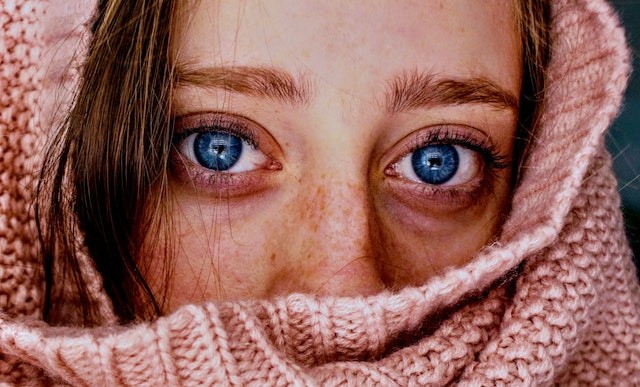
Blue-eyed individuals reportedly have a common ancestor. Yes, people with blue eyes are reportedly related to each other.
Are Blue Eyes a Sign of Inbreeding?
Where do blue eyes come from? According to a study, everyone with blue eyes has a common ancestor. All living blue-eyed humans on the Earth today have a genetic mutation that occurred between six and 10,000 years ago, according to a team from the University of Copenhagen.
Per Professor Hans Eiberg from the Department of Cellular and Molecular Medicine, we all used to have brown eyes. The OCA2 gene codes for the so-called P protein, which produces melanin, the pigment that gives color to our hair, eyes, and skin. However, a genetic mutation affecting the OCA2 gene in our chromosomes led to the creation of a "switch," which literally "turned off" the capacity to produce brown eyes.
The "switch," found in the gene following OCA2, restricts the gene's action to lessening the formation of melanin in the iris, effectively "diluting" brown eyes into blue. Therefore, the switch's impact on OCA2 is quite particular. Humans would have albinism if the OCA2 gene had been deleted or turned off, leaving them without melanin for their hair, eyes, or skin color.
The quantity of melanin in the iris can account for variations in eye color ranging from brown to green. However, blue-eyed people have minimal variance in the amount of melanin in their eyes. According to Professor Eiberg, we can infer that all people with blue eyes are descended from the same progenitor. The identical switch has been passed down to each of them at the same location in their DNA. Contrarily, the region of their DNA that regulates the creation of melanin exhibits significant individual variation in brown-eyed people.
Are Blue Eyes Recessive?
Eye color, which can be blue or brown, is one genetic variable controlled by just one gene. Blue eyes are recessive, while brown eyes are dominant.
According to the Punnett square and the yellow and green peas analogy, it should be impossible for two blue-eyed parents to have a brown-eyed child. Still, two brown-eyed parents can have a blue-eyed child if both parents have a genetic mix of one blue-eye and one brown-eye gene. According to the single-gene paradigm, two blue-eyed parents can only pass blue-eye genes to their offspring.
If a mother has two blue-eyed genes and a father has two brown-eyed genes, then the child can inherit his father's brown-eye gene and his mom's blue-eye gene. But the brown-eye gene is dominant, so all their kids will have brown eyes. But if both parents have blue eyes, then the children will inherit their blue eyes.
Eyes come in a variety of colors other than only blue or brown. For example, some Asians have eyes that are so dark they almost appear black. There are groups with gray, green, violet, hazel, and a wide range of colors, as well as Scandinavians with blue eyes.
RELATED ARTICLE : Sedentary Lifestyle Can Increase One's Risk of Stroke; Higher Than Those Spending More Time for Physical Activity
Check out more news and information on Medicine and Health in Science Times.












